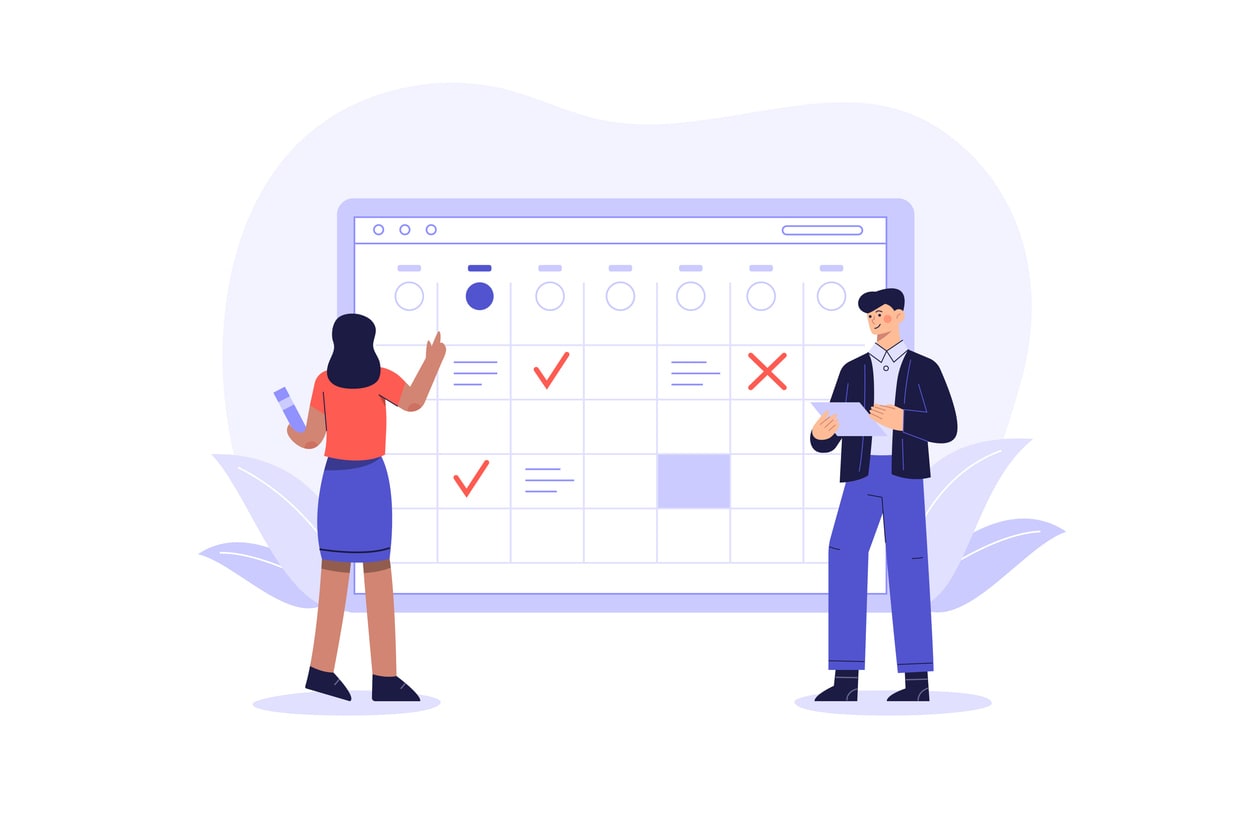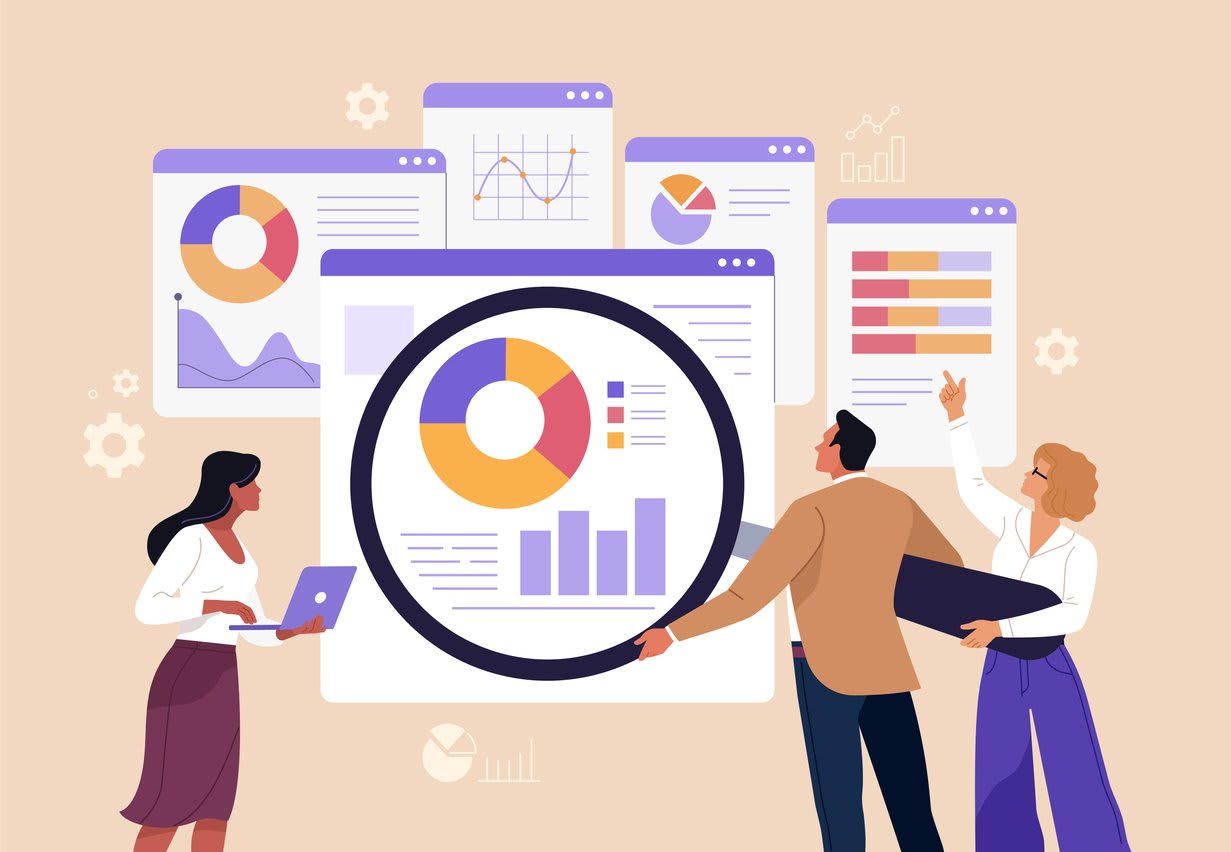Human resources analytics involves using data to make better HR decisions and align strategies with business goals. This article covers what HR analytics is, why it’s important, key components, types, challenges, solutions, and future trends.
Key Takeaways
- HR Analytics involves the collection and analysis of HR data to drive business performance and optimize talent management.
- The various types of HR analytics, including descriptive, diagnostic, predictive, and prescriptive, provide organizations with unique insights and actionable strategies.
- Challenges in HR analytics implementation, such as data integration and skill gaps, can be addressed through training, effective governance, and leveraging advanced technologies like cloud-based tools.
What is Human Resources Analytics?

Human Resources (HR) Analytics is the process of gathering, analyzing, and reporting HR data to measure the impact of HR metrics on business performance. Unlike general big data, HR analytics specifically focuses on using big data for human resources applications. HR analytics leverages vast amounts of employee data, allowing organizations to make data-driven decisions that remove guesswork from employee management and align strategies with business goals. Additionally, business analytics can enhance these efforts by providing deeper insights into HRIS and HR analytics.
The primary purpose of HR analytics is to drive business value, identify workplace trends, measure policy effectiveness, and improve talent and business outcomes. Analyzing employee data helps HR teams uncover patterns and trends, inform hiring decisions, identify areas for HR policy improvement, and measure the impact on performance and satisfaction.
HR analytics prepares organizations for future success by offering tools and insights to thrive in a competitive landscape. HR professionals can leverage workforce analytics to better understand their workforce, optimize processes, and enhance overall organizational performance.
Importance of HR Data Analytics
HR data analytics is not just a trend but a necessity these days. Utilizing HR data analytics significantly enhances the quality of decision-making across all HR operations. Analyzing HR metrics enables organizations to improve decision-making, enhance employee management, reduce risks, lower costs, and achieve both HR and business goals.
One of the core benefits of HR data analytics is its ability to transform all aspects of planning, processes, and functionality within human resources. Best Buy discovered a direct correlation between employee engagement and sales, noting that even a slight increase in engagement could significantly boost revenue. This demonstrates how HR analytics can lead to outcomes that promote higher employee engagement and productivity.
Moreover, establishing a feedback loop allows for continuous monitoring of HR initiatives against benchmarks and objectives. This allows HR leaders to make informed decisions and address specific trends like high turnover in certain demographics. In this way, HR data analytics empowers organizations to maximize human capital and achieve broader business objectives.
Key Components of HR Analytics
Effective HR analytics begins with identifying data sources and centralizing employee data to analyze. Utilizing both public and private data channels provides a comprehensive overview of the workforce and informs HR strategies. The initial phase involves gathering and organizing both internal and external data significantly.
Creating a single source of truth through data integration allows for more accurate decision-making within HR analytics. Integrated analytics capabilities are crucial for maximizing employee performance and optimizing recruitment strategies. Advanced HR technologies are evolving to facilitate better management and analysis of workforce data, enhancing analytical capabilities.
Data visualization, through HR dashboards, effectively identifies retention issues or hiring costs. Custom dashboards tailored to diverse user needs present relevant and actionable data, supporting HR leaders in making data-driven decision making data-driven decisions.
Types of HR Analytics

HR analytics can be categorized into four main types: descriptive, diagnostic, predictive, and prescriptive. Each type serves a distinct purpose and offers unique insights into HR data.
Descriptive analytics analyzes historical data to comprehend past workforce events, including employee demographics. For instance, it can include metrics like the average paid time off utilized by employees, helping HR professionals understand patterns and trends.
Diagnostic analytics aims to uncover the reasons behind trends observed in the data to identify trends using various analysis techniques. For example, analyzing employee absenteeism can help identify factors leading to increased absences and inform strategies to address these issues.
Predictive analytics forecasts future HR events based on past data. In recruitment, predictive HR analytics identifies characteristics of successful candidates, streamlining the hiring process and helping pick the best candidates using recruitment data.
Prescriptive analytics goes a step further by recommending actions based on the data analysis. Advanced techniques like machine learning and AI suggest optimal solutions to HR challenges, such as improving retention or enhancing training programs.
Major Challenges in Implementing HR Analytics
Implementing HR analytics comes with its share of challenges. Organizations frequently encounter:
- Resource limitations
- Inadequate technical infrastructure
- Data complexity
- Skill gaps in HR departments
- Privacy and compliance issues
These factors further complicate the effective use of HR analytics. Addressing these challenges is crucial for leveraging the full potential of HR analytics.
Data Integration from Multiple Sources
Data integration from multiple sources is a significant challenge in HR analytics, involving:
- Merging data from different formats and languages, which poses a considerable hurdle.
- Dealing with data silos, where information is isolated within departments, hindering comprehensive organizational insights.
- Ensuring collaboration across departments, which is critical for successful data integration efforts.
- Making data accessible and usable for HR analytics through effective integration.
Establishing internal governance rules and regulations ensures effective data access and usage in HR analytics. This involves:
- Setting standards for data collection
- Setting standards for data storage
- Setting standards for data analysis
These standards ensure consistency and accuracy in the data used for HR analytics.
Skill Gaps in HR Analytics
Skill gaps in HR analytics are a prevalent issue. Essential skills for HR professionals include the ability to analyze data, understand statistics, predictive modeling, proficiency in reporting, and HR analytics skills. Despite the importance of these skills, 32% of HR professionals believe their staff lacks effective data evaluation capabilities. Moreover, over 75% of HR professionals report difficulty in recruiting for data analysis roles.
Ongoing employee training and development programs are crucial as they enhance the team’s ability to effectively analyze and utilize accurate data. Misinterpretation of data can render it useless, underscoring the need to invest in professional development to build analytical capabilities and improve data literacy.
Privacy and Compliance Issues
HR professionals must navigate privacy and compliance issues when collecting personal data. Compliance with regulations like the California Consumer Privacy Act (CCPA) and the General Data Protection Regulation (GDPR) is mandatory.
Sensitive information gathered for HR analytics requires strict adherence to privacy regulations to maintain trust with employees and avoid significant penalties.
Solutions to Overcome HR Analytics Challenges
Overcoming HR analytics challenges involves developing the necessary infrastructure for data collection, improving data governance, and utilizing technology effectively. Understanding big data facilitates the adoption and application of HR data analytics, enabling HR teams to maximize its benefits.
Implementing an analytics team across all aspects of HR operations can streamline decision-making and enhance performance.
Enhancing Data Quality and Accessibility
Enhancing data quality and accessibility is crucial for successful HR analytics. Key components include:
- Assessing data blind spots to improve the validity of HR analytics outcomes.
- Developing a strong data governance framework to ensure the consistency and accuracy of collected data.
- Collaboration across departments.
- Creating a detailed plan.
- Identifying data sources and standards.
- Implementing an evaluation process.
These are all critical components of effective data integration in HR analytics and data-related integration.
Integrating data from multiple sources in HR analytics faces challenges such as:
- Data complexity
- Different formats and languages
- Quality variations
- Compliance standards
- Data silos
Implementing strong data security practices and protocols for breaches is also important for protecting data in HR analytics.
Training Programs for HR Professionals
Ongoing training is crucial for HR professionals to effectively handle data analytics challenges. Investing in training significantly improves the analytical skills of HR teams, enabling more effective analysis of HR data. HR analytics courses focus on building analytical acumen and a strategic view of talent analytics, equipping HR professionals to handle complex data analysis tasks.
Organizations should invest in training courses for their HR teams and collaborate with the business intelligence team to develop analytical capabilities. Tools like Excel can serve as a starting point for students beginning their journey in HR analytics.
Leveraging Cloud-Based HR Analytics Tools
Cloud-based HR analytics tools significantly enhance decision-making and operational efficiency for HR departments. These tools offer modern HR teams essential capabilities for effective data management and easier data access. Cloud-based solutions streamline analytics processes, enabling HR teams to gain insights more efficiently.
Overall, cloud-based HR analytics tools enhance HR departments’ ability to make data-driven decisions, improving business outcomes and operational efficiency.
Real-World Examples of HR Analytics

Real-world examples of HR analytics demonstrate its practical applications and benefits. Organizations that have successfully utilized HR analytics to address various HR challenges and improve their operations include:
- E.ON
- HP
- Under Armour
Predictive Analytics in Recruitment
Google uses predictive analytics in recruitment, employing a fully automated algorithm that generates interview questions tailored to identify the most suitable candidates. This algorithm has achieved 86% confidence in predicting successful candidates, streamlining the hiring process and ensuring the selection of the best talent through artificial intelligence.
Additionally, Google created an algorithm to analyze rejected resumes, effectively sourcing candidates who might have been overlooked initially. Predictive analytics thus plays a crucial role in making informed recruitment decisions, enhancing hiring efficiency and effectiveness.
Employee Retention Strategies
Effective HR data analysis significantly reduces employee turnover by identifying retention patterns. For instance, HP implemented a ‘Flight Risk’ score that helps predict which employees are likely to leave, allowing managers to take proactive measures to improve retention. This proactive approach retains valuable talent and reduces the costs associated with high turnover.
Under Armour also used HR analytics to address employee attrition, successfully reducing its employee attrition rate by 50%. This dramatic reduction prevented a predicted loss of 500 employees out of 5,000, showcasing HR analytics’ power in improving retention and overall organizational stability.
Performance Management
Performance management strategically employs data and analytics to enhance employee performance and organizational outcomes. For example, a multinational tech conglomerate improved its quality of hire performance metric from 38% to 75% by implementing structured interviews and psychometric testing. This significant increase in the quality of hire demonstrates how targeted HR analytics can lead to better performance management outcomes.
HR analytics enhances the hiring process and fosters a culture of continuous improvement in performance management systems. This approach ensures that organizations can consistently achieve their business goals and maintain a high-performing workforce through effective human resource management, supported by the hr team and efficient HR processes, including a human resource information system, while an HR analyst plays a crucial role in this data-driven culture within the HR department.
Summary
HR analytics is revolutionizing how organizations manage their human resources, providing valuable insights that drive better decision-making and business outcomes. From defining HR analytics and its importance to exploring real-world examples and future trends, this blog post has covered the critical aspects of HR data analytics. By addressing major challenges and offering practical solutions like Kumospace, we hope to equip HR leaders with the knowledge to leverage HR analytics effectively.
Embracing HR analytics is not just about adopting new tools or technologies; it’s about fostering a data-driven culture within the organization. By investing in the necessary infrastructure, training programs, and cloud-based tools, HR departments can transform their operations and achieve remarkable results. Let HR analytics guide your journey towards a more efficient, effective, and future-ready HR function.
Frequently asked questions
HR analytics involves collecting and analyzing HR data to assess how HR metrics influence business performance, making it essential for informed decision-making, process improvement, and enhanced business outcomes. Its importance lies in fostering a more strategic approach to managing human resources.
The key components of HR analytics consist of identifying and centralizing data sources, integrating this data, and visualizing it through HR dashboards. Together, these elements facilitate informed decision-making and enhance HR strategies.
Implementing HR analytics faces major challenges such as resource limitations, inadequate technical infrastructure, data complexity, skill gaps within HR teams, and privacy and compliance issues. Addressing these obstacles is crucial for successful implementation.
Organizations can overcome challenges in HR analytics by investing in infrastructure, enhancing data governance, and providing training for HR professionals while utilizing cloud-based analytics tools. These steps will empower HR teams to effectively harness data for informed decision-making.
HR analytics in practice includes Google's predictive analytics for recruitment, HP's 'Flight Risk' score to forecast employee turnover, and Under Armour's effective strategies for reducing employee attrition. These cases demonstrate the powerful impact of data-driven decision-making in human resources.





